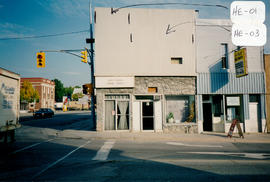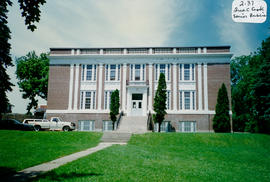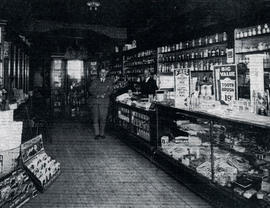Fred C. Cook Honored at School Opening
By John Slykhuis
Fred C. Cook senior public school was officially opened last week amid universal tribute to the man for whom the school was named.
Simcoe-Centre M.P.P. Arthur Evans, a friend of the late Mr. Cook, said it was fitting that the respected school be named after Mr. Cook and he recalled the days the two worked together on Bradford Council.
Representing the town of Bradford, Reeve Ken Wood said of Mr. Cook, "He was an inspiration all my life."
Guest speaker Dr. Jack Ramsay, director of education for the Simcoe County Board of Education, also paid tribute to Mr. Cook.
"We admired him and what he stood for. We really feel the name of the school has been well chosen."
Mr. Cook, who died on Thursday April 24, 1975, at the age of 73, was active in municipal politics and he was Bradford's Deputy-reeve for over 10 years.
A lay reader in the Anglican Church from 1934 until his death, Mr. Cook served as the Sunday school superintendent for more than 45 years.
He was also active in the Simcoe Lodge of Masons and served as grand master of the Orange Lodge.
Bouquet
The highlight of the evening was a presentation of of a bouquet of carnations to Mrs. Leone Cook, who told the audience, "it's difficult to find the words to express my deep appreciation. I'm sure he would be deeply honored to have this building named after him."
Mrs. Cook was given a standing ovation.
A photo portrait of Mr. Cook was presented by the Cook family to school principal Neil Sheffield, who said it would be hung in a place of honor.
Greetings were also conveyed by the Warden of Simcoe County, Allan Glassford, West Gwillimbury Deputy-reeve Bud Brown, and Simcoe County Board of Education chairman William Brown of Orillia.
Reverend J. C. House of Trinity Anglican Church in Bradford led in a prayer of dedication.
Lawyer Tom Evans, representing Simcoe Masonic Lodge 79, presented the school with a plaque to be placed on a sign, also donated by the lodge, at the school's entrance.
Rotary Club president Rick Walker presented Mr. Sheffield with a framed copy of the club's Four Way Test which will be hung in the school hall.
Gifts of appreciation were given to the school's naming committee by students of Fred C. Cook. Trustee Frank Prothero introduced the guest speaker, Mr. Ramsay.
School board trustee Audrie Trotter delivered a message of appreciation and principal Neil Sheffield brought accolades to the school's staff. Trustee Sam Neilly was chairman for the evening, and the Fred C. Cook senior choir entertained the over flow audience with several songs.
After the program, guided tours through the school were given. The building, formerly Bradford District High School, was converted to a senior elementary school in 1976.









